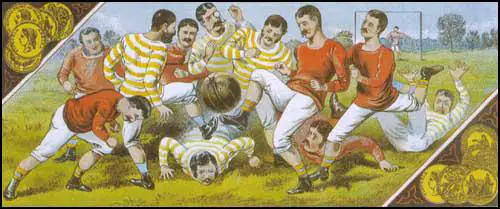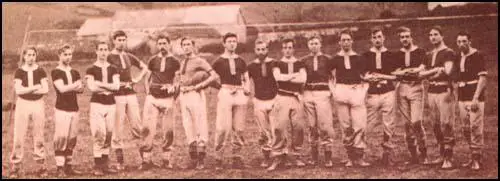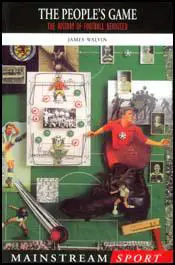Cambridge Rules
In the 18th century football was played by most of Britain's leading public schools. There is documentary evidence that football was played at Eton as early as 1747. Westminster started two years later. Harrow, Shrewsbury, Winchester and Charterhouse had all taken up football by the 1750s.
Thomas Arnold was appointed headmaster of Rugby in 1828. He had a profound and lasting effect on the development of public school education in England. Arnold introduced mathematics, modern history and modern languages and instituted the form system and introduced the prefect system to keep discipline. He modernized the teaching of Classics by directing attention to literary, moral or historical questions. Although Arnold held strong views, he made it clear to his students they were not expected to accept those views, but to examine the evidence and to think for themselves.
Arnold also emphasized the importance of sport in young men's education. Like most headteachers in public schools, Arnold believed that sport was a good method for "encouraging senior boys to exercise responsible authority on behalf of the staff". He also argued that games like football provided a "formidable vehicle for character building".

Each school had its own set of rules and style of game. In some schools the ball could be caught, if kicked below the hand or knee. If the ball was caught near the opposing goal, the catcher had the opportunity of scoring, by carrying it through the goal in three standing jumps.
Rugby, Marlborough and Cheltenham developed games that used both hands and feet. The football played at Shrewsbury and Winchester placed an emphasis on kicking and running with the ball (dribbling). School facilities also influenced the rules of these games. Students at Charterhouse played football within the cloisters of the old Carthusian monastery. As space was limited the players depended on dribbling skills. Whereas schools like Eton and Harrow had such large playing fields available that they developed a game that involved kicking the ball long distances.
According to one student at Westminster, the football played at his school was very rough and involved a great deal of physical violence: "When running... the enemy tripped, shinned, charged with the shoulder, got down and sat upon you... in fact did anything short of murder to get the ball from you."
In 1848 a meeting took place at Cambridge University to lay down the rules of football. Teachers representing Shrewsbury, Eton, Harrow, Rugby, Marlborough and Westminster, produced what became known as the Cambridge Rules. One participant explained what happened: "I cleared the tables and provided pens and paper... Every man brought a copy of his school rules, or knew them by heart, and our progress in framing new rules was slow."
It was eventually decided that goals would be awarded for balls kicked between the flag posts (uprights) and under the string (crossbar). All players were allowed to catch the ball direct from the foot, provided the catcher kicked it immediately. However, they were forbidden to catch the ball and run with it. Only the goalkeeper was allowed to hold the ball. He could also punch it from anywhere in his own half. Goal kicks and throw-ins took place when the ball went out of play. It was specified that throw-ins were taken with one hand only. It was also decided that players in the same team should wear the same colour cap (red and dark blue).
Sometimes public schools played football against boys from the local town. Although these games often ended in fights, it did help to spread knowledge of Cambridge Rules football.

Some public schools refused to accept the Cambridge Rules. At Uppingham School in Rutland, the students played with an enormously wide goal. In 1862, one of the teachers at Uppingham, John Charles Thring, published his own set of rules:
1. A goal is scored whenever the ball is forced through the goal and under the bar, except it be thrown by hand.
2. Hands may be used only to stop a ball and place it on the ground before the feet.
3. Kicks must be aimed only at the ball.
4. A player may not kick the ball whilst in the air.
5. No tripping up or heel kicking allowed.
6. Whenever a ball is kicked beyond the side flags, it must be returned by the player who kicked it, from the spot it passed the flag line, in a straight line towards the middle of the ground.
7. When a ball is kicked behind the line of goal, it shall be kicked off from that line by one of the side whose goal it is.
8. No player may stand within six paces of the kicker when he is kicking off.
9. A player is ‘out of play’ immediately he is in front of the ball and must return behind the ball as soon as possible. If the ball is kicked by his own side past a player, he may not touch or kick it, or advance, until one of the other side has first kicked it, or one of his own side has been able to kick it on a level with, or in front of him.
10. No charging allowed when a player is ‘out of play’; that is, immediately the ball is behind him.
Thring published his rules under the title, The Simplest Game. Some teachers liked this non-violent approach and several schools adopted Thring's rules.

